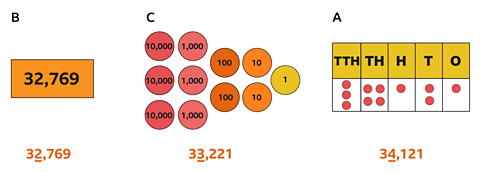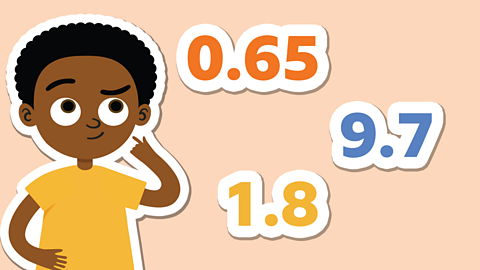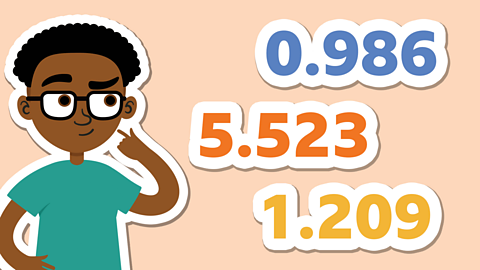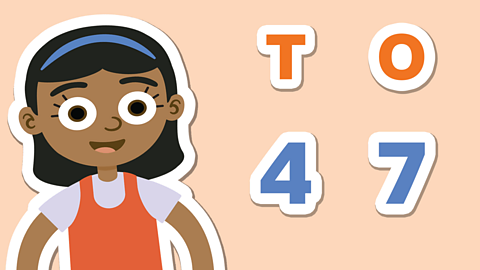What is place value?
It is important to understand the place value of each digit in a number to be able to order numbers.
Some ways that can help you to identify the place value of each digit are:
- place value charts
- part-whole models
- base 10
- counters
These can help you decide whether a number is larger or smaller than another.
Example 1
Put these numbers in ascending order.

First, work out what number each representation is showing.
A is made up of 3 ten thousands, 4 thousands, 1 hundred, 2 tens and 1 one, making 34,121.
B is already written as a number - 32,769.
C has 3 ten thousands, 3 thousands, 2 hundreds, 2 tens and 1 one, making 33,221.
You can now compare the numbers. All of them are in the thirty thousands, so look at the thousands column.
The smaller the number in the thousands, the smaller the number!

By comparing the thousands, the numbers are now in ascending order.
What if the thousands are the same?
You would look at the hundreds column instead to compare those digits!
Example 2
Put these numbers in descending order.

Again, work out what number each place value representation shows.
A - The counters show 4 ten thousands, 1 thousand, 2 hundreds, 1 ten and 2 ones - 41,212.
B - The place value chart shows 4 ten thousands, 1 thousand, 2 hundreds, 3 tens and 1 one - 41,231.
C - The number line involves some estimation. The arrow appears half way between 41,100 and 41,200, so it must be pointing at 41,150.
All of the numbers have the same amount of ten thousands and thousands, so look at the hundreds to compare them.
A and B also have the same amount of hundreds, so just move onto the tens to compare the numbers.
Here are the numbers in descending order:

Activity
More on Place value
Find out more by working through a topic
- count10 of 12

- count11 of 12

- count12 of 12

- count1 of 12
